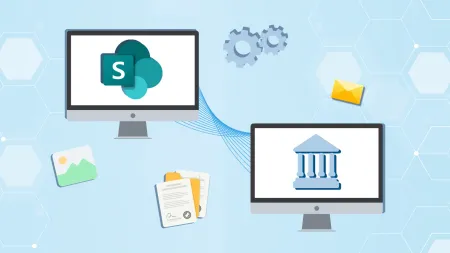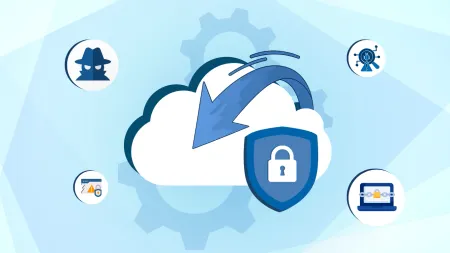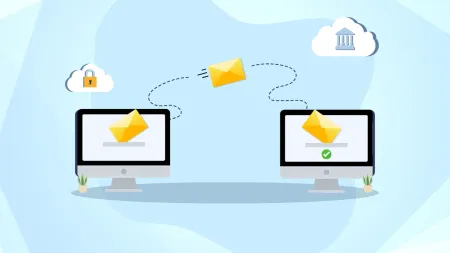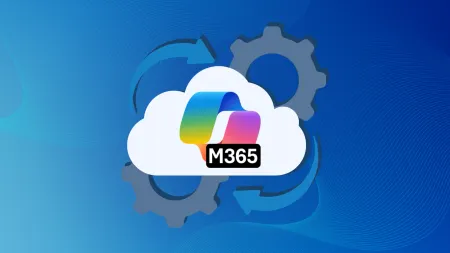Outlook Organization Tips to Take Back Your Outlook Mailbox
Struggling with a cluttered Outlook mailbox? Discover quick and efficient organization tips to streamline your email management.

While emails play a more important role than ever in our personal and professional lives by helping us communicate with clients and colleagues effectively, the sheer volume of emails you receive in a day can be overwhelming. This is particularly true if you get a lot of notification and spam emails that dilute your inbox and distract you from what’s important, which could cause you to spend a good chunk of your day sorting through emails. In fact, the average professional spends over a quarter of their day just sorting through and responding to emails.
Fortunately for Microsoft 365 users, Microsoft provides several inbox management solutions in Outlook to keep your inbox organized. Using these tools can help save you time as you will no longer have to search through endless emails to find what you need, and it reduces the risk of important emails being lost in a sea of spam. To help you make the most of Outlook’s organization features so that you can focus on what’s important, we’ve compiled some quick Outlook organization tips that will help you sort through the noise and prioritize the information you receive.
Quick Outlook Organization Tips
Are you overwhelmed by your inbox every time you sit down at your desk? The good news is that Microsoft provides endless ways to customize your Outlook mailbox to meet your needs so that you can work more efficiently. The great thing is that these changes are easy to implement, as you can set up the following Outlook email organization features in under 5 minutes. Here is a look at our top tips for quick ways that you can organize Outlook to take back your inbox.
Focused Inbox
Focused Inbox is Microsoft’s organization feature for Outlook that automatically prioritizes messages into two tabs: Focused and Other.
The feature helps keep your inbox organized by sending important emails from contacts you frequently interact with to your Focused tab, while all other emails are automatically sent to the Other tab. As you continue to sort and reclassify emails over time, Focused Inbox learns your preferences and what contacts you interact with the most, ensuring that your most important emails remain in the Focused tab while the rest is filtered out.
To prevent emails from getting lost, Outlook notifies you about messages sent to the Other inbox, and you can easily navigate between the two.
To set up Focused Inbox in your Outlook mailbox, follow these steps:
-
Open Outlook.
-
Select View > View Settings.
-
In Mail > Layout, select the account you want to make changes to then select “Sort messages into Focused and Other.”
-
Select Save to apply the changes you made.
To modify how Focused Inbox classifies your messages, select the Focused or Other tab in your inbox and then right-click the message that you want to move. Choose either Move to Other or Move to Focused. You can also choose Always Move to Other or Always Move to Focused to ensure that all future emails from that contact go to the appropriate tab. The more you do this, the more Outlook will learn about your preferences and automatically improve your Focused tab.
Create Outlook Folders
One of the most frustrating things is losing an important email in the chaos of your inbox. One way to keep things neat and tidy in Outlook is to organize your emails into folders according to sender, subject, deadline, or even order of importance. You can then sort emails into folders as soon as they arrive to keep your inbox organized, and then you can easily find the emails you need later by returning to your folders.
Fortunately, creating folders in Outlook is a simple process. In the folder pane on the left in Outlook, right-click your email address, or hover over it and select More options > Create new folder. Next, enter a name for the new folder and press enter to save it. You will now have a new folder that you can drag and drop emails to, keeping your inbox organized.
Outlook Folders
While folders can help you better organize your inbox, it can be a hassle to constantly move messages to their designated folder. Fortunately, with Outlook you can automate this process by creating custom rules that will automatically perform specific actions on emails that arrive in your inbox, including moving emails to different folders based on their sender. Here’s how to accomplish this with Outlook rules:
-
Locate a message in your inbox that you want to make a rule for.
-
Right-click on the message and select “Create Rule” as seen in the screenshot in the above link.
-
Choose the folder where you want all messages from that sender or set of senders to be moved, and then select OK.
-
Select OK again to create the rule.
Outlook Conditional Formatting
Outlook Rules can be a bit aggressive, and important emails can slip through the cracks if you aren’t careful. If you prefer to have all emails come straight to your Inbox or Focused inbox, Outlook Conditional Formatting is another top Outlook organization tip to sort mail by importance.
Conditional formatting is a way to make email messages in Outlook stand out when they meet conditions set by you by highlighting them in different colors. For instance, you may choose to have messages from your manager highlighted in red so that they immediately catch your attention. Conditional formatting can then be a helpful way to make sure messages from certain senders (or that contain specific words) are not overlooked.
Here’s how to set up Conditional Formatting in your Outlook mailbox:
- Navigate to Settings > Mail > Conditional Formatting.
- Next, select + Create new conditional formatting rule.
- Name your new rule.
- Choose your condition(s).
- Select the font color for the message to display.
- Click OK once you have selected your preferred color.
- Click Save to implement the new rule.
It is important to note that rules are prioritized in the order that they appear. If you accidentally create two rules that conflict with one another, the top rule will prevail. Additionally, conditional formatting is only available to individuals with a work or school account and a qualifying Microsoft 365 subscription.
You’re the hero of your productivity journey, and we’re here to support you every step of the way! With a few simple yet powerful Outlook organization tips, you can take control of your inbox, streamline your schedule, and reclaim valuable time in your day. Imagine staying ahead of your tasks, mastering your calendar, and having an email system that works for you—not against you.
We’re here to help you unlock that potential! Whether you’re looking to sharpen your email management skills, organize your workflow, or connect Outlook with other tools to supercharge your efficiency, you’ve got this—and we’re here to guide you. Contact us today and take the next step toward becoming a productivity powerhouse with Outlook as your trusted sidekick!





